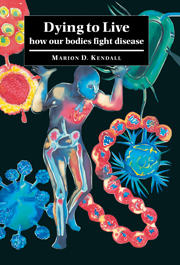Summary
Acquired Immunodeficiency Syndrome (AIDS) AIDS patients are severely immunocompromised, since the human immunodeficiency virus (HIV) attacks many of the immune system cells and destroys them. As a result, the patient cannot fight off any pathogens that enter the body through the skin or other major ports of entry, such as the mouth, anus, eyes and sweat glands. Nor can the patient combat uncontrolled growth of cancerous cells within the body. In the initial stages of an HIV infection, before any serious problems are suspected, the skin may have a transient rash. As the disease progresses, patients may develop a number of skin conditions, such as dermatitis around the sebaceous glands of hairs, persistent genital ulcers, and eczema. Fungi such as Candida albicans, which can affect many healthy people without harming them, become a problem and cannot be controlled. Later on in the HIV infection, many patients have shingles, and the serious skin and connective tissue cancer, Kaposi's syndrome, takes hold. This is seen as pink/purple blotches on the skin which may ulcerate, and swellings caused by enlarged lymph nodes. As many as 40% of homosexual patients with AIDS develop Kaposi's syndrome, yet in healthy men that are not infected with HIV it is rare and only occurs in older men of certain Mediterranean origins. In Africa, both men and women may develop Kaposi's syndrome in AIDS.
- Type
- Chapter
- Information
- Dying to LiveHow our Bodies Fight Disease, pp. ix - xiPublisher: Cambridge University PressPrint publication year: 1998



